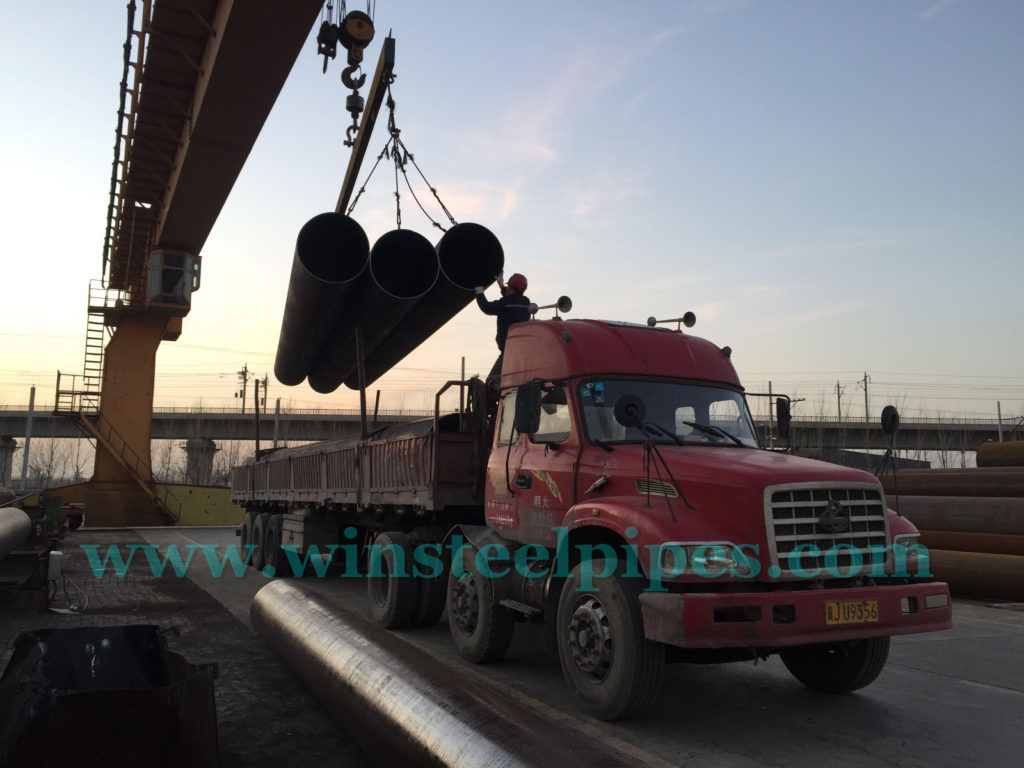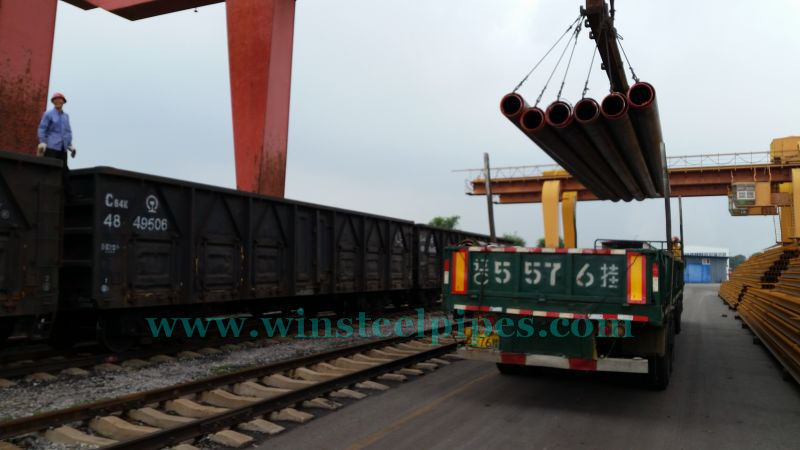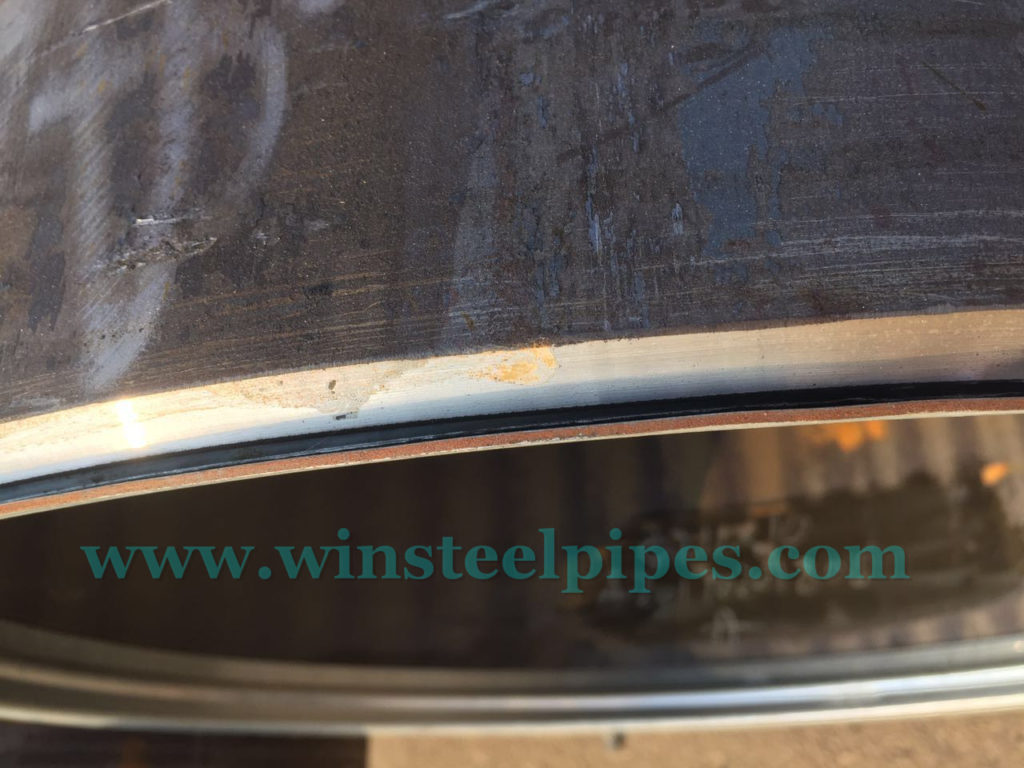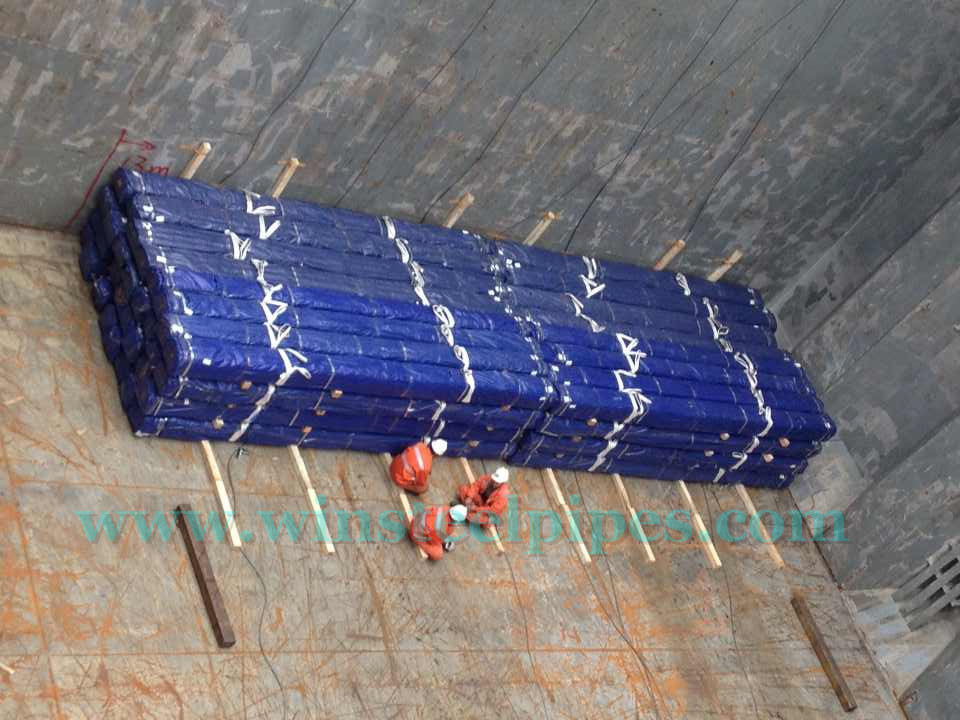LSAW pipe Loading is an important process in the procedure of steel pipe contract. Usually, the manufacturer is responsible for the steel line pipe shipping. The manufacturer shall prepare and follow loading diagrams which details about how the pipe arranged, protected and secured on trucks, railcars, barges or ocean-going vessels, whichever is applicable.

When LSAW pipe loading, something important like end damage, abrasion, peening, and fatigue cracking should be designed to prevent. Some rules, codes, standards or recommended practices should be applied or complied with when loading pipes.
If you want to see more details about LSAW pipe loading in the factory, please see this video.
Recommended Railcars Practice for LSAW Pipe Loading
1. RAILCARS CONDITION
If using railcars to ship pipes, it shall be free of all foreign materials. Particularly those of such size and hardness of material that could damage pipes during shipment by abrasion. Materials that could contribute to the movement of the pipe in the car during shipping or humping should also clear off.

Railcars to ship pipes that have metallic protrusions on the bed or sides (such as bent or tom parts) that would require an excessive thickness of bearing strips or of side stakes to prevent contact of the protrusion with the line pipe during shipment shall not be used.
2. HANDLING EQUIPMENT
When we use end hooks for LSAW pipe loading, it shall be designed to prevent pipe end damage. And it should be lined in the area of land (bevel face) contact with cushioning material. For example, a nonmetallic material such as rubber or a metallic material such as aluminum should be used. But the brass, copper, bronze, and any copper alloy shall be excluded.
Handling equipment like end hooks should have sufficient width and depth to adapt to the internal curvature of the pipe as well. If pipe ends are not provided with adequate end protectors, it shall be attached to pipe hooks with Elastoplast aprons to protect the steel pipe end.
Lifting shall be carried out in such a manner that impact loads sufficient to cause local denting or out-of-roundness of pipe body or pipe ends will not occur.
When we handling pipes using loose lifts, we should taken all necessary precautions to prevent pipe damage during handling. And it should be given enough consideration to the selection of slings that will prevent surface damage. Where forklifts are used, the fork ends shall be rounded or properly padded to minimize damage to the pipe.
3. PIPE END PROTECTION (GONDOLAS)
Pipe end protection should also according to the rules, codes, standards or recommended practices. If any of the pipe end protection is closer than 1.5 m ( 5ft ) to the end of the car, a minimum of 25 mm ( 1in ). nominal thickness rough lumber, or it’s equivalent, shall be securely attached to the end of the car to prevent the pipe ends from contacting the end gates.
Permanently wood-lined end gates are considered suitable for end protection. At the time of loading, a minimum clearance of 1ft (0.3m) shall be provided between the end gates and each end of the pipe to facilitate handling.
Recommended Railcars Practice for LSAW Pipe Loading on Barges and Marine Vessels
1. VESSEL CONDITION
Cargo compartments should be reasonably free from any foreign objects or material likely to cause either physical damage, contamination, or chemical reaction with the line pipe. The bilge pumping system shall be in working order to remove standing water from the cargo hold.
2. SHIPPING SPACE
To make the best use of available space, pipes should be laid longitudinally or athwart the vessel. A clearance of 1 foot must be left between the vessel (or other cargo) and the pipe ends to facilitate unloading. Dimensions of hatchways should be large enough to allow the steel pipes to pass in a horizontal position unless special precautions are taken.
3. HANDLING EQUIPMENT
When we used end hooks for handing line pipe, it shall be designed to prevent end damage. It should be lined in the area of land (beveled face ) contact with cushioning material. For example, a nonmetallic material such as rubber or a metallic material such as aluminum, but brass or copper shall be excluded. Usually, we give and metal end protector to the LSAW pipes.

Having sufficient width and depth of hooks is very necessary to fit the internal curvature of the pipe. Pipe hooks should attach rubber aprons to protect the pipe ends unless adequate end protectors are used.
Lifting pipes shall be carried out in such a manner that impact loads sufficient to cause local denting or out of roundness of pipe body or pipe end will not occur.
When lifting pipes are loaded by loose lifts, it is necessary to take precautions to prevent surface or other damage to pipes during loading and unloading.
4. Pipes Loading on deck

When loading on the deck, the LSAW steel pipe shall be placed on a horizontal surface. And the building of a wooden floor is recommended to eliminate contact of the steel pipe with metallic protrusions and to compensate for inclined planes.
There shall be a sufficient number of stanchions for the pipe to rest against. If the stanchions are metallic, wood or rubber strips shall be interposed between them and the pipes. Stowing cables or chains shall be isolated from any contact with pipe through a protection medium such as rubber strips. During transportation, the tension of stowing cables or chains should be checked daily.
5. SIDE PROTECTION
Pipes are heavy, especially for the LSAW steel pipe. Nominally, the LSAW pipe is larger than 400 mm. So it is absolutely necessary to prevent stress concentrations, wooden side-bearing strips or wood blocking. It shall be provided so that contact with the hull of the vessel or any protrusion is prevented.
We have professional supervision when loading LSAW steel pipes, not only in the port but also in the factory. We ensure that all pipes are transported or move safely and properly.